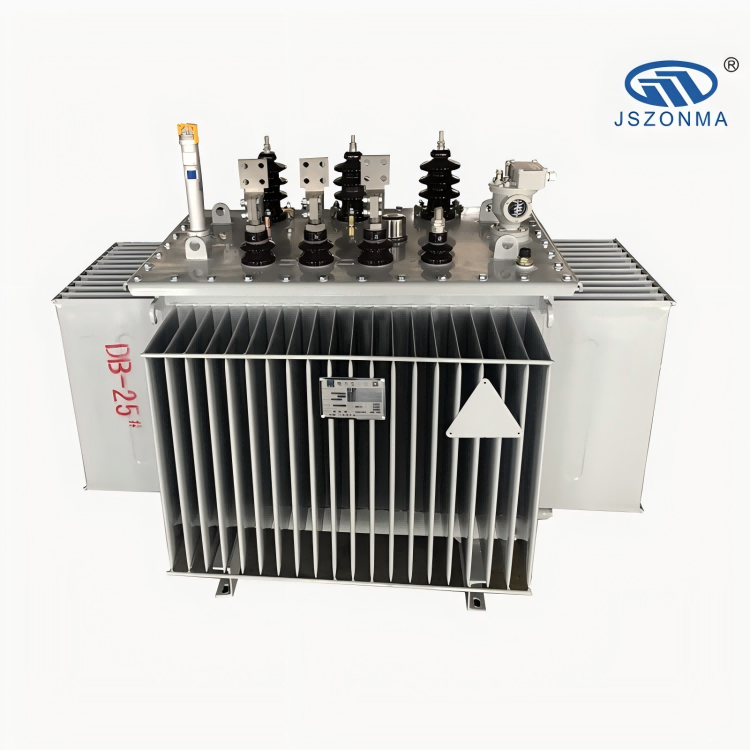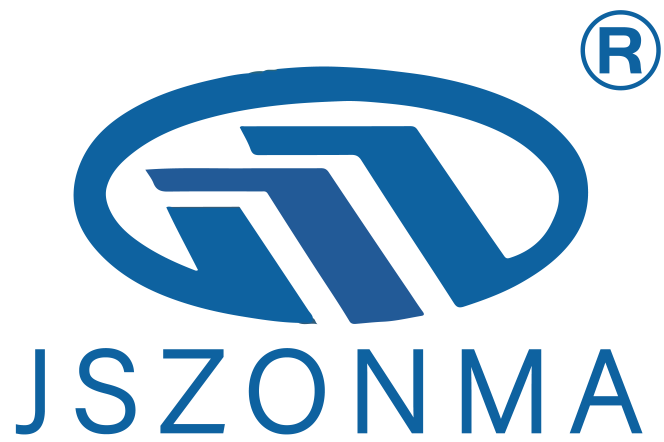The electrical power infrastructure relies heavily on sophisticated equipment that ensures efficient energy transmission and distribution across vast networks. At the heart of this infrastructure lies the power transformer, a critical component that enables voltage level adjustments throughout the electrical grid system. These devices serve as the backbone of modern electrical systems, facilitating the safe and efficient transfer of electrical energy from generation facilities to end consumers. Understanding the various types and applications of these transformers is essential for engineers, facility managers, and industry professionals working within the electrical sector.

Modern electrical grids operate with multiple voltage levels to optimize transmission efficiency and minimize power losses over long distances. High voltage transmission lines carry electricity across great distances with minimal losses, while lower voltage distribution networks deliver power safely to residential and commercial facilities. The transition between these voltage levels requires specialized equipment capable of handling substantial electrical loads while maintaining system stability and safety standards.
The complexity of contemporary power systems demands transformers that can operate reliably under varying load conditions, environmental factors, and operational requirements. From massive utility-scale installations to compact distribution units, these devices must meet stringent performance criteria while adhering to international safety and efficiency standards. The selection of appropriate transformer types depends on numerous factors including voltage requirements, load characteristics, installation environment, and maintenance considerations.
Core Construction Technologies
Laminated Steel Core Design
The foundation of every power transformer lies in its core construction, which determines the device's magnetic characteristics and overall efficiency. Laminated steel cores represent the most common design approach, utilizing thin silicon steel sheets stacked together to minimize eddy current losses. These laminations are typically oriented in specific patterns to optimize magnetic flux distribution while reducing energy losses during operation. The quality of core steel and lamination techniques directly impacts transformer efficiency and operational lifespan.
Advanced manufacturing processes have led to the development of grain-oriented electrical steel with superior magnetic properties. This specialized steel exhibits directional magnetic characteristics that align with the transformer's magnetic flux paths, resulting in reduced core losses and improved efficiency. The lamination thickness has also evolved, with thinner sheets providing better loss characteristics but requiring more sophisticated manufacturing techniques and quality control measures.
Amorphous Core Technology
Emerging technologies have introduced amorphous metal cores as an alternative to traditional silicon steel construction. These cores utilize rapidly cooled metallic alloys that lack crystalline structure, resulting in significantly reduced no-load losses compared to conventional designs. Amorphous core transformers typically achieve 70-80% reduction in core losses, making them particularly attractive for applications where energy efficiency is paramount.
The manufacturing process for amorphous cores involves rapid quenching of molten metal alloys, creating ribbon-like materials with unique magnetic properties. While these cores offer superior efficiency characteristics, they require specialized handling during assembly and may have different mechanical properties compared to traditional silicon steel cores. The investment in amorphous core technology often provides long-term operational savings through reduced energy consumption.
Insulation and Cooling Systems
Oil-Immersed Insulation Systems
Traditional oil-immersed transformers utilize mineral oil as both an insulating medium and cooling agent. The oil serves multiple functions including electrical insulation between windings, heat transfer from internal components to external cooling surfaces, and arc extinction in tap-changing mechanisms. High-quality transformer oil must maintain its dielectric properties over extended periods while withstanding thermal and electrical stresses encountered during normal operation.
The oil-immersed design allows for compact construction while providing excellent cooling characteristics essential for high-power applications. Regular oil testing and maintenance ensure continued insulation performance and early detection of potential issues. Modern power transformer designs incorporate advanced oil preservation systems that minimize contamination and extend service life while maintaining optimal operating conditions.
Dry-Type Insulation Technologies
Dry-type transformers eliminate the need for liquid insulation by utilizing solid insulating materials and air cooling systems. These designs offer advantages in environmentally sensitive locations where oil leakage concerns exist or fire safety requirements prohibit liquid-filled equipment. Cast resin insulation systems provide robust protection against environmental contaminants while maintaining excellent dielectric properties under normal operating conditions.
Advanced polymer insulation materials have enabled the development of dry-type transformers suitable for increasingly demanding applications. Vacuum pressure impregnation processes ensure complete penetration of insulating resins throughout winding structures, eliminating air pockets that could lead to partial discharge activity. These manufacturing techniques result in transformers with excellent moisture resistance and long-term reliability in harsh operating environments.
Voltage Classification Systems
Distribution Voltage Applications
Distribution transformers operate at voltage levels typically ranging from 4kV to 35kV on the primary side, stepping down to utilization voltages for end customers. These units form the final link in the electrical distribution chain, converting medium voltage levels to standard service voltages used in residential, commercial, and light industrial applications. Distribution transformer design emphasizes reliability, cost-effectiveness, and ease of maintenance while meeting utility requirements for load serving capability.
The compact nature of distribution transformers requires careful attention to thermal management and insulation coordination. Many distribution units utilize pole-mounted or pad-mounted configurations that must withstand outdoor environmental conditions while providing decades of reliable service. Load tap changing capabilities allow voltage regulation to compensate for system voltage variations and maintain acceptable service quality for connected customers.
Transmission Voltage Categories
High voltage transmission transformers handle voltage levels exceeding 69kV, with some units operating at voltages up to 800kV or higher in extra high voltage applications. These massive installations represent critical infrastructure components that enable long-distance power transmission with minimal losses. Transmission transformer design requires extensive analysis of insulation coordination, short-circuit withstand capability, and system protection requirements.
The physical size and complexity of transmission transformers necessitate specialized transportation, installation, and maintenance procedures. These units often incorporate sophisticated monitoring systems that provide real-time data on operating conditions, enabling predictive maintenance strategies and early fault detection. The critical nature of transmission applications demands redundancy and rapid replacement capabilities to maintain system reliability.
Specialized Application Categories
Industrial Process Transformers
Industrial facilities require transformers designed to handle specific load characteristics and operating conditions unique to manufacturing processes. These applications may involve harmonic-rich loads, frequent starting of large motors, or specialized voltage requirements for process equipment. Industrial power transformer designs must accommodate these challenging operating conditions while maintaining efficiency and reliability standards.
Rectifier transformers serve electrochemical and metal refining industries by providing DC power through semiconductor conversion systems. These units must handle the harmonic distortion created by rectifier loads while maintaining acceptable voltage regulation under varying load conditions. Special winding configurations and core designs help mitigate the effects of harmonic currents on transformer performance and system power quality.
Renewable Energy Integration
The growing integration of renewable energy sources has created demand for transformers designed specifically for wind, solar, and other alternative energy applications. Wind farm transformers must operate in remote locations with limited maintenance access while handling the variable output characteristics of wind generation. These units often incorporate enhanced monitoring capabilities and robust designs to ensure reliable operation in challenging environmental conditions.
Solar power installations require transformers capable of handling the DC-to-AC conversion process and integrating with utility distribution systems. Grid-tie transformers must provide isolation between solar generation equipment and utility systems while maintaining power quality standards. The intermittent nature of solar generation creates unique operating conditions that influence transformer design and protection requirements.
Performance and Efficiency Standards
Energy Efficiency Regulations
International standards organizations have established comprehensive efficiency requirements for power transformers to reduce global energy consumption and environmental impact. These standards specify minimum efficiency levels based on transformer ratings and application categories, driving manufacturers to develop more efficient designs and materials. Compliance with efficiency standards often influences transformer selection decisions and lifecycle cost calculations.
The implementation of efficiency standards has accelerated the adoption of advanced materials and design techniques that minimize losses during operation. Low-loss core steels, optimized winding configurations, and improved manufacturing processes contribute to enhanced efficiency performance. Utilities and industrial customers increasingly consider efficiency ratings alongside initial purchase costs when evaluating transformer options for new installations and replacements.
Testing and Qualification Requirements
Comprehensive testing protocols ensure power transformer reliability and performance under various operating conditions. Factory acceptance testing verifies design compliance with specifications and identifies potential manufacturing defects before shipment. Routine tests include winding resistance measurements, insulation testing, and loss measurements that confirm transformer characteristics match design specifications.
Type testing demonstrates transformer capability to withstand abnormal operating conditions such as short circuits, lightning impulses, and temperature extremes. These tests validate design margins and provide confidence in long-term reliability under system fault conditions. Special tests may be required for unique applications or operating environments that exceed standard test conditions covered by industry specifications.
FAQ
What factors determine the appropriate power transformer type for a specific application
The selection of appropriate power transformer types depends on several critical factors including voltage requirements, load characteristics, environmental conditions, and installation constraints. Primary considerations include the required voltage transformation ratio, power rating, and whether the application involves indoor or outdoor installation. Environmental factors such as temperature extremes, humidity, altitude, and seismic requirements influence insulation systems and mechanical design features. Additionally, factors like available space, transportation limitations, maintenance accessibility, and lifecycle cost considerations play important roles in transformer selection decisions.
How do efficiency ratings impact the total cost of ownership for power transformers
Efficiency ratings significantly impact total ownership costs through energy consumption over the transformer's operational lifetime, which typically spans 25-40 years. Higher efficiency transformers reduce no-load and load losses, resulting in lower electricity costs throughout the service period. While more efficient units may have higher initial purchase prices, the energy savings often justify the additional investment through reduced operating expenses. Utilities and large industrial customers frequently perform lifecycle cost analyses that consider efficiency benefits, maintenance requirements, and replacement costs when evaluating transformer options.
What maintenance practices ensure optimal performance and longevity of power transformers
Effective maintenance programs for power transformers include regular oil testing and treatment, thermal monitoring, electrical testing, and visual inspections of external components. Oil-immersed transformers require periodic oil analysis to monitor insulation condition, moisture content, and dissolved gas levels that indicate internal problems. Dry-type transformers benefit from regular cleaning, connection tightening, and insulation testing. Advanced monitoring systems provide continuous surveillance of operating parameters, enabling predictive maintenance strategies that identify potential issues before failures occur. Proper maintenance scheduling and qualified technician training are essential for maximizing transformer reliability and service life.
How do environmental regulations affect power transformer design and selection
Environmental regulations influence power transformer design through restrictions on insulating materials, cooling mediums, and disposal requirements for end-of-life equipment. Regulations limiting the use of certain chemical compounds have driven development of alternative insulating oils and dry-type designs for environmentally sensitive installations. Efficiency standards mandate minimum performance levels to reduce energy consumption and associated emissions from power generation. Additionally, regulations governing noise levels, electromagnetic fields, and fire safety requirements affect transformer design features and installation practices in urban and residential areas.
Table of Contents
- Core Construction Technologies
- Insulation and Cooling Systems
- Voltage Classification Systems
- Specialized Application Categories
- Performance and Efficiency Standards
-
FAQ
- What factors determine the appropriate power transformer type for a specific application
- How do efficiency ratings impact the total cost of ownership for power transformers
- What maintenance practices ensure optimal performance and longevity of power transformers
- How do environmental regulations affect power transformer design and selection

